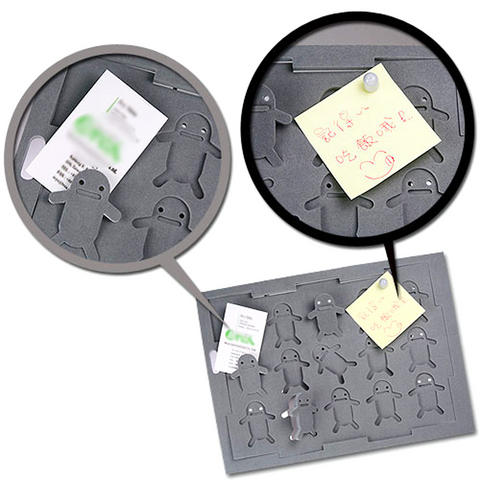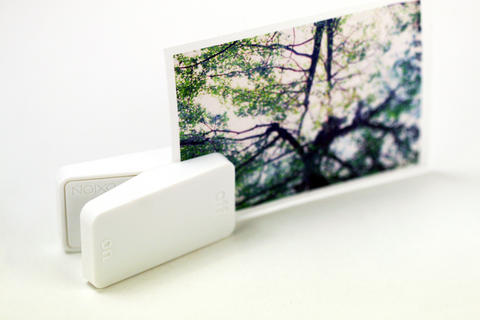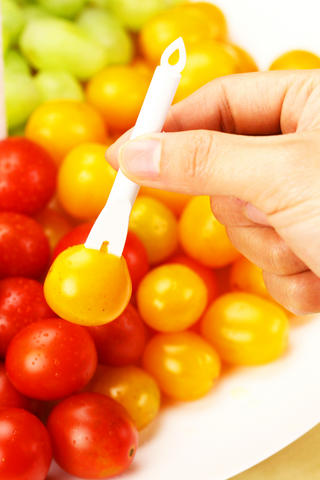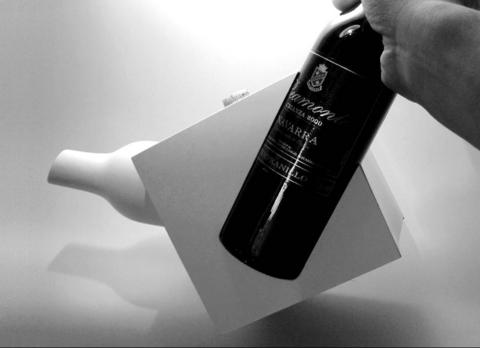Once famous as one of the world's manufacturing bases, Taiwan has been striving to meet the challenge of shifting from OEM, or original equipment manufacturing, to ODM, or original design manufacturing. Large electronics manufacturers were among the first to make the jump and set up in-house design teams to build international brands such as Asus and Acer.
Since the local industrial design sector started winning prestigious awards in Europe, Japan and the US roughly five years ago, Taiwan has seen the emergence of lifestyle brands formed by 20- to 30-something designers and the proliferation of workshops and exhibitions.
"Industrial designers have been at the service of enterprises since industrial designing was introduced to Taiwan to enhance competitiveness. But as the concept of design has become … an [increasingly] important part of people's lives, we have seen young designers choosing to take a more imaginative and creative approach to their profession," said Hu You-tsung (胡佑宗), art director of NDD Design (唐草設計) and lecturer at Shih Chien University (實踐大學) and National Kaohsiung Normal University (高雄師範大學).

PHOTOS: COURTESY OF PLUSTONE AND DO A LITTLE DESIGN
As the public's appreciation of design increases and the take-up of lifestyle products broadens with the burgeoning of stores and studios such as Dragonfly (清庭), Blue Stone (青石) and Nordic (北歐櫥), Taiwan's emerging lifestyle designers' initial task is to form an identity through their work.
"Just as Taiwan itself has long been a meeting point of different cultural influences, Taiwanese design is said to be an agglomeration of different styles and looks. Foreign designers often say they don't see personality in our designs, but if such diversity can be … creatively expressed, it may well become our biggest strength," said Debbie Huang (黃華郁), director of Asustek Computer Inc's (華碩) MID-industrial design department.
To younger generations of local designers, the uniqueness of Taiwanese design lies in the island's past and present, and they see their task as translating the country's distinctive cultural vocabularies into successful products. Do A Little Design (做設計), the first local brand showcased at Dragonfly, and Plustone Creative Group (點石創意), whose products are sold under the brand names Dxion and Milife, share this philosophy.

"The global trend in design has changed from a universal style to localized … products from countries like Brazil and Thailand. For Taiwan's designers, our current work is sui generis designs … . After all, lifestyle can be best defined as a statement of each individual's life," said Roc Wang (王俊隆), Do A Little Design's director.
With the country's strong OEM tradition, local designers are more familiar with the manufacturing process than their Western counterparts. To industry professionals, Taiwanese designers are adept at putting ideas into production, but they are seen as lacking in originality and creativity.
"Industrial design and lifestyle design follow different logics," Wang said. "While the former works within a framework, the latter is basically free from boundaries."

Agua Design's (水越設計) products dwell on the relationship between human beings and the living environment, as can be seen in its Ideal Part, Thinking Green, Olympics 2008 and City Yeast series.
"If you limit yourself to commercial design, you are likely to get lost in appearance. I believe concept design is a designer's life-long work. It's a way to stimulate and inspire, express new ways of thinking and innovation," said Aqua Chou (周育如), Agua Design's director.
Agua's high-quality, limited-edition stationary products are locally produced and are on a par with international brands.

A similar approach is taken by Plustone Creative Group, which insists on producing "Made in Taiwan" goods. The company has expended much energy finding local factories that can produce high-quality products, which match international standards.
"As a big chunk of manufacturing businesses have moved to China, it's not easy to find appropriate factories to work with, especially as we have high spec demands but place small orders," said Alan Huang (黃偉倫), Plustone Creative Group's brand director.
To businesses like Plustone, the most difficult challenge in changing from a design-service company to a brand is the long time it takes to realize returns on investment. The lead time from product development, analyzing target markets and finding marketing channels to having people identify with the brand's products and part with their money is daunting for many investors.

"As Taiwan's lifestyle design scene seems to have taken off and more designers are interested in entering the field, my advice is to formulate a clear understanding of what you are capable of doing, because once you have a brand, there is no way of turning back and you have to keep on developing, manufacturing and marketing new products," said Alan Huang.
Aiming for the global market, Agua Design, Plustone Creative Group and Do A Little Design have forged strong alliances with The One (異數宣言), a local design collective, and several other brands and individual designers in the hope of shaping a distinctive Taiwan aesthetic.

May 11 to May 18 The original Taichung Railway Station was long thought to have been completely razed. Opening on May 15, 1905, the one-story wooden structure soon outgrew its purpose and was replaced in 1917 by a grandiose, Western-style station. During construction on the third-generation station in 2017, workers discovered the service pit for the original station’s locomotive depot. A year later, a small wooden building on site was determined by historians to be the first stationmaster’s office, built around 1908. With these findings, the Taichung Railway Station Cultural Park now boasts that it has

Wooden houses wedged between concrete, crumbling brick facades with roofs gaping to the sky, and tiled art deco buildings down narrow alleyways: Taichung Central District’s (中區) aging architecture reveals both the allure and reality of the old downtown. From Indigenous settlement to capital under Qing Dynasty rule through to Japanese colonization, Taichung’s Central District holds a long and layered history. The bygone beauty of its streets once earned it the nickname “Little Kyoto.” Since the late eighties, however, the shifting of economic and government centers westward signaled a gradual decline in the area’s evolving fortunes. With the regeneration of the once

In February of this year the Taipei Times reported on the visit of Lienchiang County Commissioner Wang Chung-ming (王忠銘) of the Chinese Nationalist Party (KMT) and a delegation to a lantern festival in Fuzhou’s Mawei District in Fujian Province. “Today, Mawei and Matsu jointly marked the lantern festival,” Wang was quoted as saying, adding that both sides “being of one people,” is a cause for joy. Wang was passing around a common claim of officials of the People’s Republic of China (PRC) and the PRC’s allies and supporters in Taiwan — KMT and the Taiwan People’s Party — and elsewhere: Taiwan and

Perched on Thailand’s border with Myanmar, Arunothai is a dusty crossroads town, a nowheresville that could be the setting of some Southeast Asian spaghetti Western. Its main street is the final, dead-end section of the two-lane highway from Chiang Mai, Thailand’s second largest city 120kms south, and the heart of the kingdom’s mountainous north. At the town boundary, a Chinese-style arch capped with dragons also bears Thai script declaring fealty to Bangkok’s royal family: “Long live the King!” Further on, Chinese lanterns line the main street, and on the hillsides, courtyard homes sit among warrens of narrow, winding alleyways and